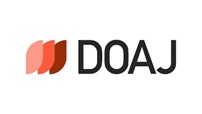Abstract
Purpose: Social influence has a decisive role in shaping a person"s cognition and behavior. Chinese face consciousness, including moral component, is an important part of Chinese traditional culture, which influences people to implement moral behavior. With both eye-tracking technology and traditional questionnaire, this research aims to explore people"s moral psychology and the psychological processing mechanisms of Chinese face consciousness, as well as the impact of Chinese face consciousness on the preference for the ecological product.
Method and Data: 75 college and MBA students" eye movement data were collected when they read different kinds of moral materials, as well as data from the subsequent questionnaires. To test the hypothesis, ANOVA analysis and Heat Map analysis were performed. Besides, the PROCESS of bootstrap was used to test mediation effect.
Findings: The results reveal that: 1. Compared to the moral-situation reading, when subjects read immoral situations, they need more processing time due to the moral dissonance and cognitive load. 2. Compared to the control condition, when threatened moral self is primed, subjects prefer to choose ecological product. 3. Protective face orientation is the mediator between threatened moral self and preference to ecological product.
Key Contributions: First, this study broadens the use of eye-tracking technology in marketing and demonstrates a better understanding of the relationship between morality and consumer behavior in a more scientific way. Second, this study not only distinguishes the meanings between “protective face orientation" and “acquisitive face orientation", but also innovatively validates that when moral self is threatened, consumers tend to choose ecological product as moral compensation in order to protect their face. It can shed light on the promotion of ecological product in practical applications.
Recommended Citation
Shi, Zhuomin; Zheng, Wanyi; and Yang, Ning
(2016)
"Can Threatened Moral Self Make People Prefer Ecological Product?,"
Asia Marketing Journal: Vol. 17
:
Iss.
4
, Article 2.
Available at: https://doi.org/10.15830/amj.2016.17.4.21
Creative Commons License

This work is licensed under a Creative Commons Attribution 4.0 License.





